The Australian Bureau of Statistics’ (ABS) population data has become a lottery.
The population estimates in the Q3 2024 and Q4 2024 national accounts releases (here and here) differed wildly from the official quarterly population statistics released a few weeks later.
The Q1 2025 national accounts, released on Wednesday, implied that Australia’s population growth accelerated to 121,200 in Q1:
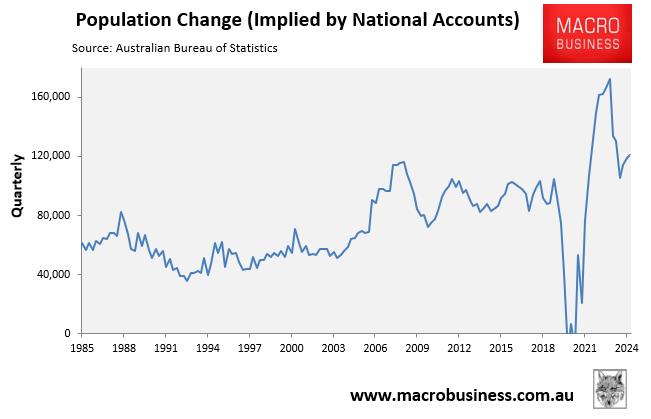
However, the national accounts suggest that Australia’s annual population increase slowed from 484,000 in Q3 2024 (the latest official figure) to 459,300 in Q1 2025:
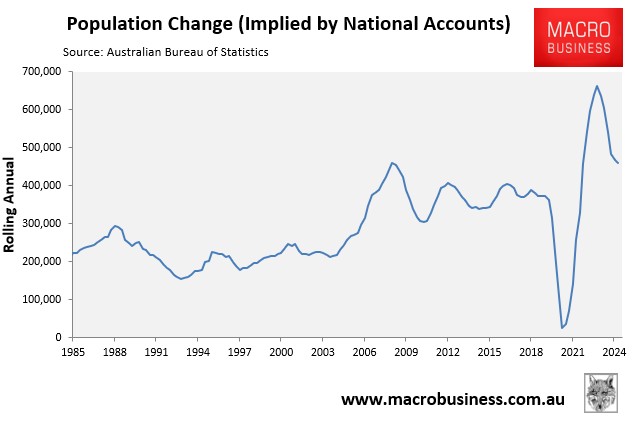
As a result, the rate of population growth rate is implied to have fallen from 1.8% in Q3 2024 to 1.7% in Q1 2025:

Based on past experience, this data should be viewed with caution and could easily get revised upwards when the official Q4 data is released later this month.
Indeed, the latest labour force release suggests that Australia’s population grew by 0.65% in the three months to April, equating to a population increase of 147,000 people (or an annualised rate of ~588,000):
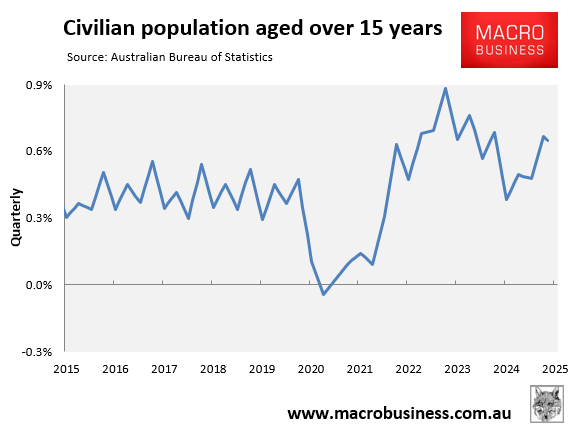
The annual rate of growth in the 15-plus population also ticked up to 2.1% (471,000) in April, according to the labour force survey:
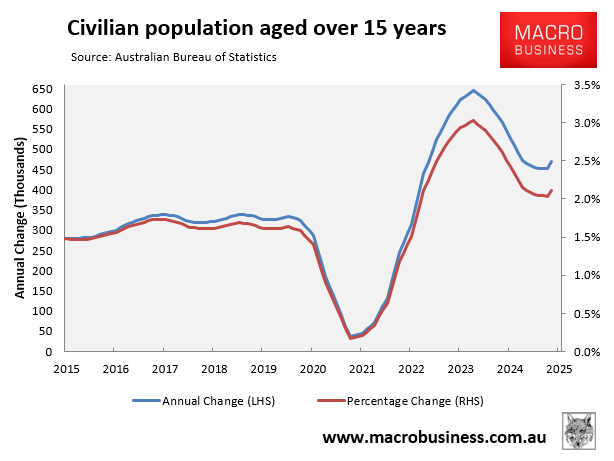
The following chart from CBA shows the divergence in the two series:
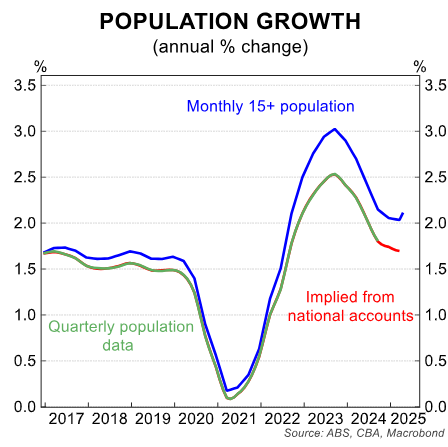
Alex Joiner from IFM Investors showed that both net permanent and long-term arrivals and the civilian population have ticked higher in 2025:

This, in turn, casts doubt on the federal budget’s forecasts for net overseas migration.
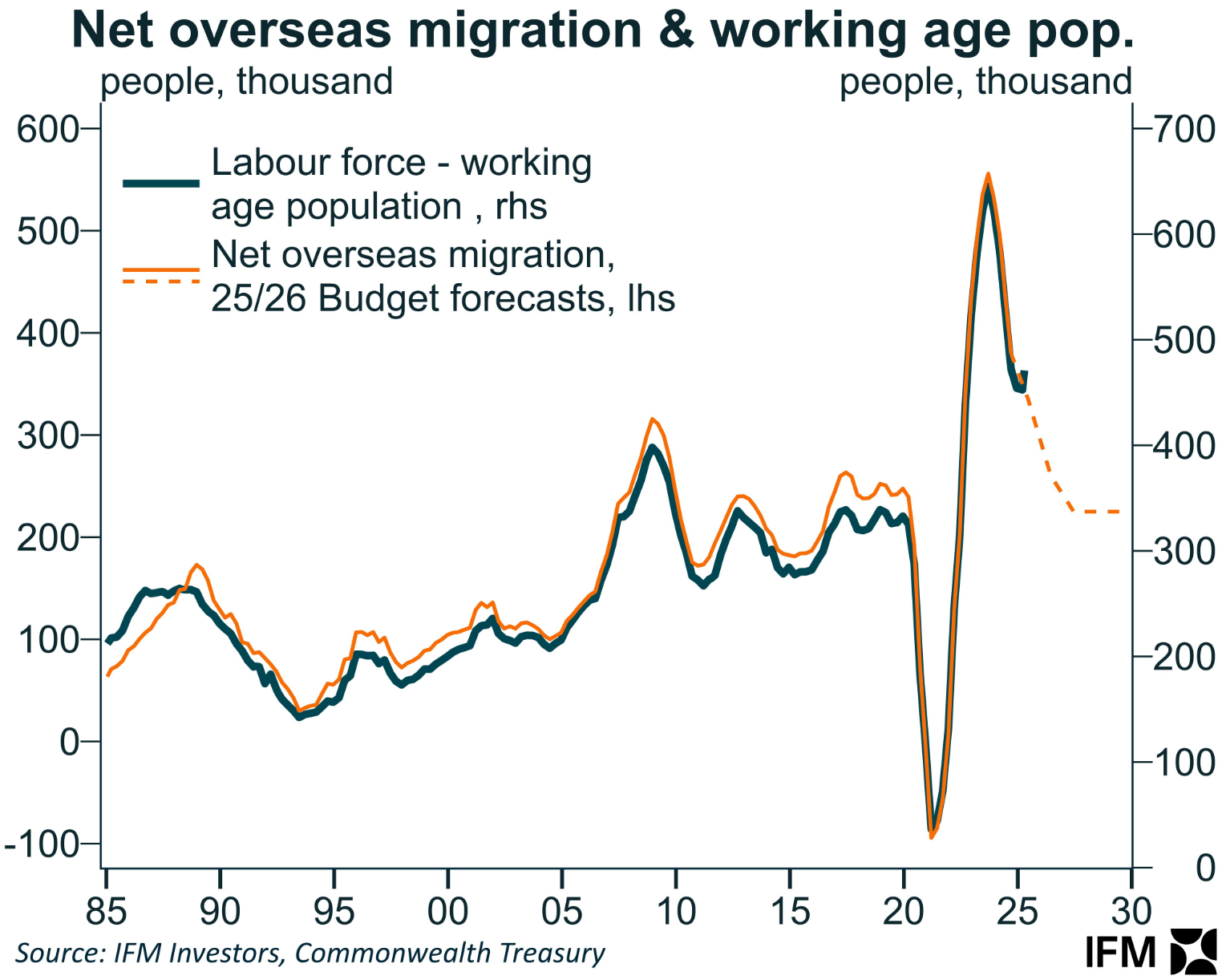
Finally, the following table shows that net permanent and long-term arrivals totaled 188,000 in the first quarter of 2025. This was only slightly below last year’s figure of 195,040 and well above 2023’s figure of 154,890:
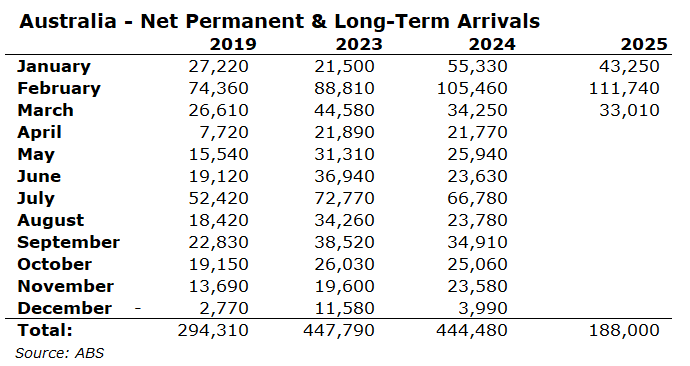
So, is Australia’s population growth now rising or falling? The various indicators are contradictory.
The official Q4 data, scheduled for release later this month, should be interesting.

